No one knows if Water Lettuce is native to North America or not. Botanists disagree with some saying it’s from Africa, a few South America. Explorer and plantaholic William Bartram came through Florida in 1764/65, spied the Water Lettuce, drew it and wrote what he saw:
“…prodigious quantities of the pistia, which grows in great plenty most of the way [along the St. Johns River, Florida], and is continually driving down with the current, and great quantities lodged all along the extensive shores of this great river and its islands, where it is entangled… and… all matted together in such a manner as to stop up the mouth of a large creek, so that a boat can hardly be pushed through them, though in 4 foot water…”
The St. John’s is the only large river in the United States that flows north. (The Nile in Egypt flows north as do all the rivers in Siberia.) The St. John’s starts in earnest on the east coast of Florida at Lake Poinsett, not far from the Space Center and due west of Rockledge and Cocoa. Lake Poinsett used to be an ocean inlet and has skate in it that have adapted to the fresh water. The river then wends its way north between various limestone and other formations to exit at Jacksonville. We know Bartram got at least as far south as Orlando, which is a couple of hundred river miles upstream from the St. Johns’ outlet. As plants don’t float upstream how did the Water Lettuce get inland?
As the rhyme tells us Columbus sailed the ocean blue in 1492. Water Lettuce is found in Africa. If the Water Lettuce came from Africa one would need to find a ship that was in fresh water in at least Northern Africa that then came to the new world carrying the plant with it. Water Lettuce would then get somehow up the St. John’s River, not exactly navigable by ocean-crossing sailing ships. Smaller boats with bits of Water Lettuce could have been rowed up stream. Indeed, one theory is that trade with St. Augustine, founded in 1565, could have introduce the plant inland. However, if I may wander…
In the early 1980s, some 30 years ago as I write, I interviewed a man called Roy W. Wall. He was at the time, if I remember correctly, 101 and lived to be 107. He still worked every day at the local hardware store which was on the inner coastal water way where the cities of Cocoa and Rockledge meet. In fact, he still walked to work. He told me that when he was a boy — in the 1880’s — the St. Johns river, which starts as a dribble perhaps 20 miles to the south west of Melbourne, would flood via Lake Poinsett all the way east to what is now U.S. Route 1 and the adjacent rail road tracks at Barton Boulevard. He said you could see from U.S. 1 what looked to be people floating on a sea of grass but were actually people polling boats on the flooded St. John’s. It is but a half-mile from that site to the intracoastal waterway. A small boat for exploring could have easily been carried from the intracoastal waterway to the St. John’s at Rockledge, with a plant or two with it. Or a bud or two could have stuck to clothing. Incidentally I asked Wall if he had any insight as to why he made it past 100 and he said he never worried about anything. Roy Wall Boulevard in Rockledge is named for him.
Dr. Daniel Austin in his massive book Florida Ethnobotany never mentions Water Lettuce. That tells us which side of that debate he is on. However it arrived, by ship, shoe or seagull (say that fast 3 times), it’s been clogging Florida waterways for over 350 years. It was also one of the first plants I investigated decades ago. Water Lettuce, aka Pistia stratiotes, is not high on the edibles list, but it is edible after cooking, usually boiling. In times of famine it has been consumed in India, China and Africa. More specifically it was recorded as consumed during the Indian famine of 1877/78, in the Sudan during famines and that the Chinese eat young cooked leaves. The problem is calcium oxalate. The plant is loaded with it, as are many other members of the Arum family.
Calcium oxalate is in the form of crystals shaped like needles, raphides. Many plants have them, including some common edibles. The crystals mechanically burn the mouth and later can precipitate in the kidneys. Cooking can reduce the amount raphides, some with dry heat and others with moist heat. If you try to eat Water Lettuce raw it will severely burn your lips, mouth and tongue and more if you manage to swallow it. So don’t. If you do burn your mouth with some, immediate application of lime juice can ease the pain. If you cook it, try only a very small amount at first to make sure the burning element has been neutralized.
Water Lettuce, also called Water Bonnets, look like a floating open head of lettuce though the light dull green leaves are thick, ridged, and hairy. There are no leaf stalks, roots are light-colored and feathery. Flowers are inconspicuous. Linked plants can form dense mats, covering a lake shore to shore. They can stop boat traffic. I’ve had to tough my way through it many times with a canoe or kayak. It is considered a serious pest in Sri Lanka, Ghana, Indonesia and Thailand.
Studies indicate that Pistia stratiotes, a monotypic genus, possesses diuretic, antidiabetic, antidermatophytic, antifungal, and antimicrobial properties. The botanical name, Pistia Strateotes is all Greek. Pistia (PIS-tee-ah) is from pistos, meaning water. Stratiotes (stra-tee-OH-teez) means soldier and was a name Dioscorides used for some Egyptian water plant, perhaps the same one.
Green Deane’s “Itemized” Plant Profile: Water Lettuce
IDENTIFICATION: A floating, stemless herb with a submerged mass of fibrous, hollow, feathery-hairy roots and an above-water rosette six to eight inches wide of light green spongy, wedge-shaped oval leaves 1.25 to 5 inches long, 5/8 to three inches wide. Six to eight vertical veins, rough-velvety, notched at the apex, inflated at the base where they can be .75 of an inch thick. Tiny white flowers, whorl of male above, single female flower below, on a spadix. Fruit green, slimy, with brown cylindrical seeds. Plant sends out runners from the tips.
TIME OF YEAR: Year round in warm climates
ENVIRONMENT: Floating in water or stationary in very damp soil. Water Lettuce is found in the Old South north to New Jersey and New York in protected areas, and westward to Texas, Arizona and California. Also present in Hawaii, Puerto Rico and the Virgin Islands. It’s found in some 17 states and will tolerate moderate freezing.
METHOD OF PREPARATION: Cooking more or less reduces the calcium oxalate. Try a little first, wait a few minutes to see if a burn develops. The usual method of cooking is boiling.
Here’s a short video on the species by the state of Florida.

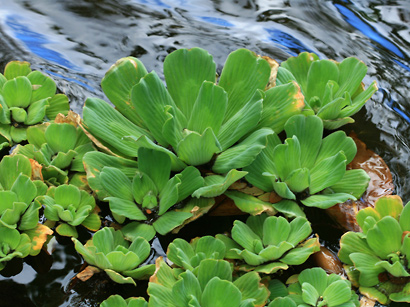
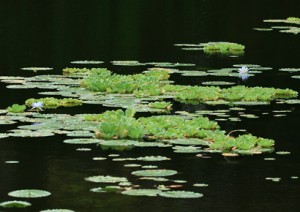
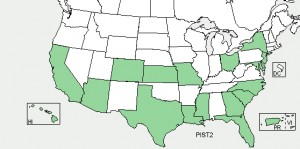
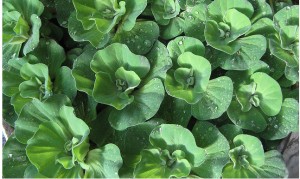
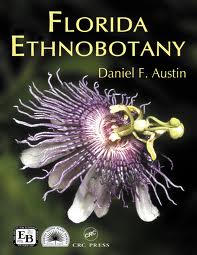
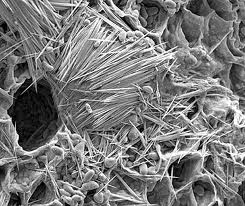

trivial i know, but, there is actually a very large number of rivers that flow north. I happen to live near one, so i hear that phrase every so often. A little more research turns up the aforementioned, not quite as rare as one is led to believe i guess.
Many flow north for a short while, but few major rivers flow north for their entire journey.
The Mackenzie River is the second largest river system in North America. It flows north from Great Slave Lake just north of the Alberta border into the Arctic Ocean.
The Genesee River, in New York also flows north and empties into Lake Ontario. The Saint Johns river, is not really a river, but an inland waterway.
Hi, do you have any recipes for water lettuce. it looks so delicious. We had to kayak through thick mats of it recently on the Loxahatchee in Jupiter and were curious about it.
No I don’t because it really is a famine food. Edible yes, but not something one would want to eat lot of all the time. And yes, it does look better than it tastes.
Plant lotus on those waters. All parts of it are edible and it is a herb as well.
Of course, if you are prone to making calcium oxalate kidney stones, you want to completely avoid eating this plant.
FYI The Mackenzie I believe is another large North American river that flows north. So do the rivers draining Lake Winnepeg into Hudson Bay.
I’m wondering what a spring wetland plant found in northern Indian that is attached to the bottom of standing water and grows upward like romaine lettuce but has a large tear drop shaped leaves (best shape I can think of…or a heart without the indentation where it meets the stem), soft, bright green leaf with fingerprint like veins is called….
the water cabbage when dried and powdered and then mixed with flour is a most efficacious raticide.aloha
Thanks! I need to try that, have got a terrible rat problem with my chickens, here in the Canary Islands. Can it harm the chickens?
Hi there, I have water lettuce and water hyacinth both growing (like mad!!) in my little garden pond. I know the hyacinth is safe to feed to chickens, do you know about the lettuce?
Thanks so much, your site is amazing!
Wild birds leave them alone. I would not feed water lettuce to chicken whose food sources are limited thus encouraging them to eat something they might not normally eat.
Thanks! Actually, my chickens won’t eat the water hyacinth either.
Water lettuce is a water plant, hence they won’t have a reliable instinct for it. This is why they will also eat inappropriate man-made things such as styrofoam. The only way to really know is have an analysis done on the calcium availability in the plant, and/or live testing. Otherwise, stick to other greenery for your chickens. 🙂
Great website. This paper of mine should interest you… in short, there is fossil evidence of water lettuce in Florida from 3,500 – 18,000 years ago. Definitely native to the US (at least Florida) at the species level, although perhaps some “exotic” strains have also been introduced over the centuries.
http://www.conservationandsociety.org/article.asp?issn=0972-4923;year=2013;volume=11;issue=3;spage=233;epage=246;aulast=Evans
hi, do you know what is the benefit of eating water lettuce for human ?
Can you feed water lettuce to cattle or even make a silage for cattle from it and if so how can I make the silage
Hi Sue – A better choice for feeding cattle, and other livestock, would be water hyacinth. It has been formally studied for that purpose, and found to be similar in nutrient value to alfalfa – though much higher in water content, of course.
Check out the article on water hyacinth on the EattheWeeds website for more info. It’s easy to grow, doubles in mass in 2-3 weeks, and is not a danger of spreading in areas that have freezing temperatures in winter. Cold below about 34 F kills it.
Water hyacinth can be fed fresh to cattle. It will clean up any nutrient runoff from livestock or fertilizer runoff from fields. It oxygenates the water for fish, though in smaller ponds or tanks it is reportedly best to keep it from covering the entire surface.
Making silage from any forage plant is done by compacting it and sealing it to exclude air. Silage inoculants are available to introduce the right kind of microbes to help preserve the ensiled forage. This usually happens naturally, but commercial inoculant can help ensure the success of the process.
The whole process is basically like making sauerkraut. Smallholders sometimes make silage in large, heavy-duty plastic bags, like those sold for construction trash.
NOTE: When silage is opened and exposed to the air, it must be used quickly, or harmful bacteria can proliferate, like Listeria – which can kill livestock. This is true of any silage or haylage.
Since water hyacinth is so high in water, it would probably be better to dry it partially before ensiling. A vacuum cleaner can be used to suck out the air from the bags before they are sealed. Bags or bales of silage are best stored in at least partial shade, especially if the plastic is black.
There are other ways to make silage, depending on how big your operation is, and the resources available.
Of course – it is best to check this info and other options & concerns for yourself. Have fun experimenting!